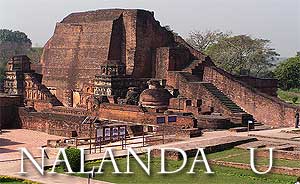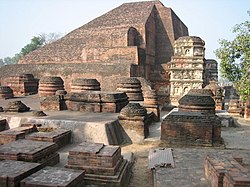The Post Gupta period in India is known for the progress in temple architecture
and sculpture. Major dynasties like, Pallavas, Cholas, Hoysalas in the south and
Palas, Senas, and Gangas in the east patronized this progress
Welcome! I have showcased some of my paintings here that are realistic and impressionistic inspired by many places I have visited and sights that have taken my breath away. Impressionistic paintings of the nineteenth century artists like Claude Monet, Van Gogh, Renoir and their contemporaries have also had a profound influence on my canvases. I invite you to browse through this eclectic set of 'Oils on Canvas'


 Nalanda was one of the world's first residential and most famous universities, i.e., it had dormitories for students. In its heyday, it accommodated over 10,000 students and 2,000 teachers.
Nalanda was one of the world's first residential and most famous universities, i.e., it had dormitories for students. In its heyday, it accommodated over 10,000 students and 2,000 teachers. 

 One of the best examples of such work is the Sarnath Pillar, which has four lions back to back at the top of the pillar.
One of the best examples of such work is the Sarnath Pillar, which has four lions back to back at the top of the pillar. 

 Nalanda was one of the world's first residential and most famous universities, i.e., it had dormitories for students. In its heyday, it accommodated over 10,000 students and 2,000 teachers.
Nalanda was one of the world's first residential and most famous universities, i.e., it had dormitories for students. In its heyday, it accommodated over 10,000 students and 2,000 teachers. 

 One of the best examples of such work is the Sarnath Pillar, which has four lions back to back at the top of the pillar.
One of the best examples of such work is the Sarnath Pillar, which has four lions back to back at the top of the pillar.